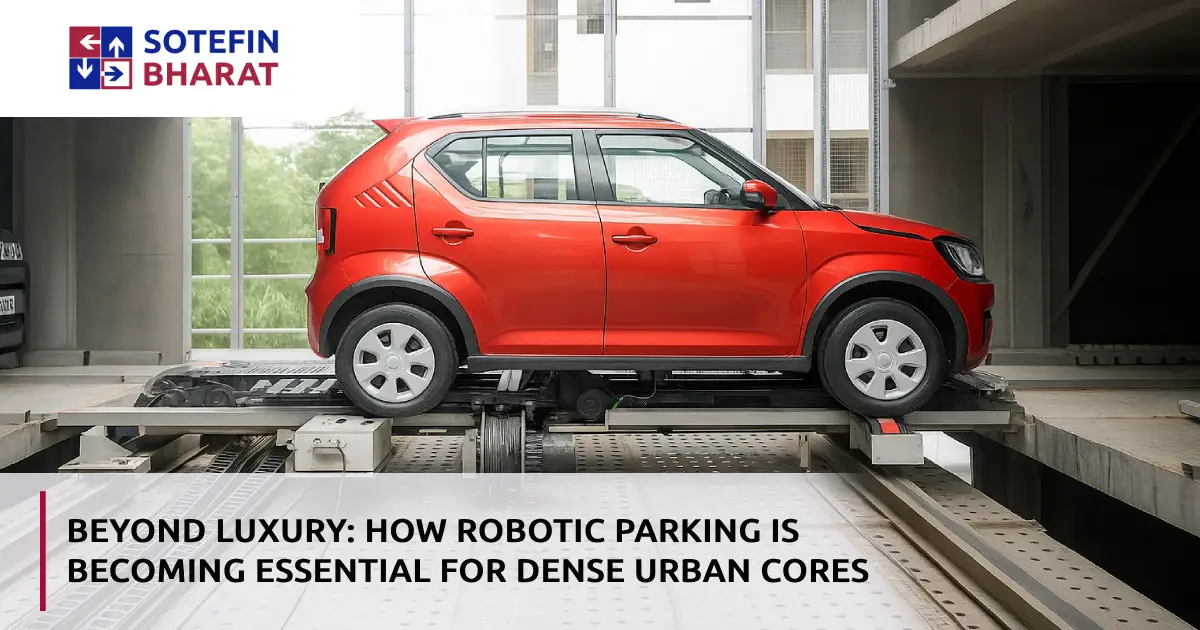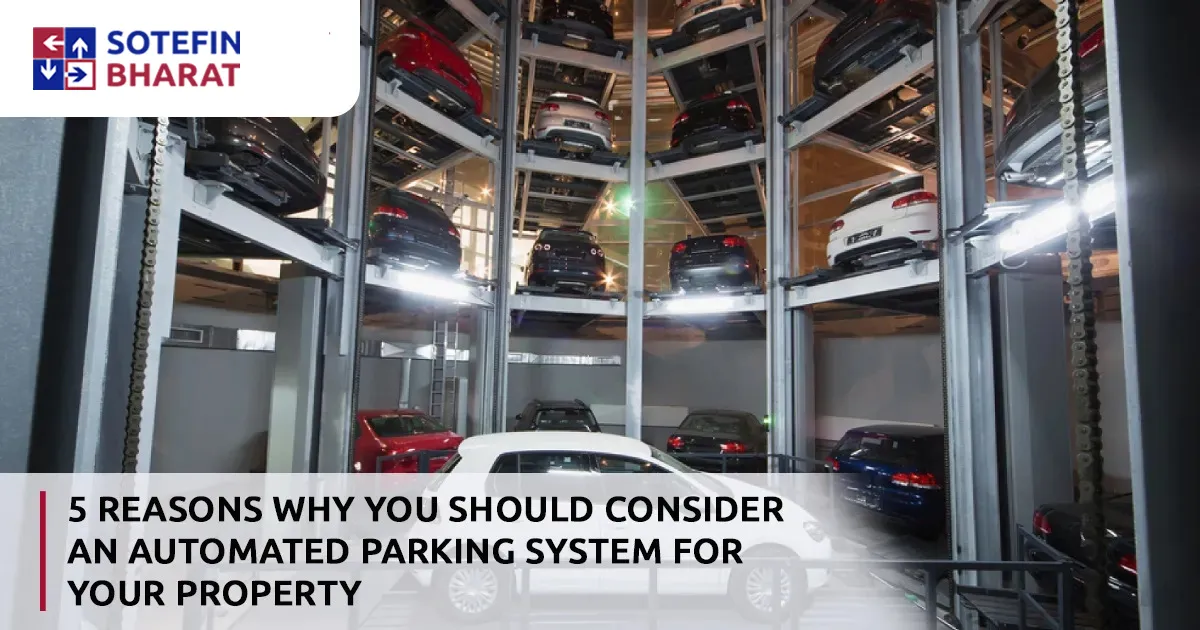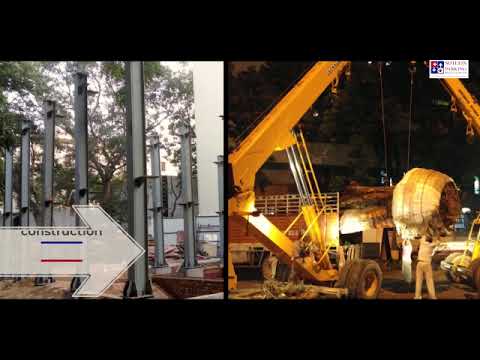
In the relentless march of urbanization, our cities are growing upwards and outwards at an unprecedented pace. Yet, amidst the towering skyscrapers and burgeoning populations, one fundamental challenge stubbornly persists: where do we put our cars? For decades, parking has been viewed largely as a convenience, an amenity to be considered only after the primary development. However, in today’s increasingly dense urban cores, the narrative is rapidly shifting. Robotic parking systems, once considered a futuristic luxury, are swiftly transitioning from an optional add-on to an absolute necessity, driven by acute land scarcity, environmental imperatives, and the sheer inefficiency of traditional parking structures.
The Urban Parking Predicament: A Looming Crisis
The statistics paint a stark picture of a global parking crisis. As of 2025, the global automated parking system market is estimated at $2.63 billion, projected to surge to nearly $5 billion by 2029, with a compound annual growth rate (CAGR) of 17.2%. This explosive growth is not merely a trend; it’s a direct response to the escalating demand for efficient space utilization in metropolitan areas worldwide.
Traditional parking garages, despite their ubiquity, are notoriously inefficient. They gobble up vast tracts of prime urban real estate, requiring significant space for ramps, drive aisles, and oversized stalls to accommodate human drivers. A conventional parking space, including circulation, typically demands 25-35 square meters. In land-starved cities like Mumbai, where prime commercial land can command prices exceeding ₹1 lakh (approximately $1,200 USD) per square foot, dedicating such valuable space to empty concrete and inefficient vehicle movement is no longer economically or environmentally sustainable.
Beyond land consumption, traditional parking contributes significantly to a litany of urban woes:
1. Traffic Congestion: Studies, including seminal research from the Indian Institute of Technology (IIT) Delhi on urban mobility patterns, indicate that up to 30% of urban traffic congestion stems from drivers circling to find parking. This “cruising for parking” isn’t just an annoyance; it’s a significant drain on time, fuel, and air quality, contributing to an estimated $300 billion in lost productivity annually in the U.S. alone, according to INRIX data.
2. Environmental Impact: Idling vehicles searching for spots release harmful emissions, including carbon monoxide, nitrogen oxides, and particulate matter. Robotic parking systems, by eliminating this search and the need for cars to run inside the garage, can reduce CO2 emissions by up to 40% in high-density zones and significantly curtail the release of toxic tire and brake dust pollutants, critical for improving urban air quality.
3. Safety and Security Risks: Open parking lots and multi-story garages can be hotbeds for vehicle theft, vandalism, and accidents due to poor visibility, inadequate lighting, and limited surveillance. Robotic systems offer a secure, enclosed environment with restricted human access, often bolstered by comprehensive surveillance cameras and biometric authentication.
4. Accessibility Challenges: Traditional multi-story parking structures can pose significant accessibility challenges for individuals with disabilities, often requiring long walks or limited elevator access. Robotic systems streamline the drop-off and pick-up process, making parking more universally accessible.
Robotic Parking: A Paradigm Shift in Urban Mobility
Robotic parking systems, also known as Automated Parking Systems (APS), represent a fundamental re-imagining of vehicle storage and retrieval. Drivers simply leave their cars in a designated entry bay, and sophisticated machinery – a combination of robotic arms, shuttles, and lifts – transports the vehicle to a pre-assigned slot, often stacking cars vertically or horizontally in a dense, compact configuration. Retrieval is equally seamless, with the car delivered back to the driver, often facing forward for easy exit, typically within 2-3 minutes.
The benefits derived from this technological leap are no longer mere conveniences but fundamental solutions to pressing urban challenges:
1. Unprecedented Space Optimization (The Foremost Necessity): This is arguably the most critical advantage, directly addressing the urban land crisis. Robotic systems can accommodate twice as many cars in the same footprint as conventional garages, often reducing the space requirement to just 10-15 square meters per car. This vertical stacking and elimination of ramps and wide drive aisles frees up precious ground-level real estate for more productive uses, such as green spaces, additional residential units, retail establishments, or office developments. For instance, a 100-car robotic facility can occupy 30% to 50% less space than its traditional counterpart. A compelling case study from Dubai’s Ibn Battuta Gate Complex exemplifies this, where a robotic parking system enabled the provision of thousands of parking spaces in a highly constrained urban area, overcoming challenges like a high water table and allowing for the development of a major mixed-use complex. Similarly, in New York City, projects like 118 East 59th Street have leveraged automated parking to maximize high-value real estate for luxury residences, rather than dedicating expansive ground floors to ramps and circulation.
2. Enhanced Efficiency and Reduced Congestion: With automated parking, drivers no longer waste time circling for a spot. The average retrieval time is remarkably low, typically 2-3 minutes, even during peak hours. This directly translates to reduced traffic congestion on city streets, improved traffic flow around parking facilities, and a more streamlined urban experience, saving commuters valuable time and reducing fuel consumption.
3. Environmental Sustainability (Beyond Compliance): By minimizing vehicle idling and internal circulation, robotic parking significantly lowers fuel consumption and greenhouse gas emissions. Furthermore, the reduced ground footprint allows for more green infrastructure, such as parks, urban gardens, and permeable surfaces, contributing to better heat management, improved air quality, and enhanced biodiversity in urban areas. Some systems are also designed to capture and filter pollutants like oil and heavy metals that typically wash off traditional parking surfaces.
4. Superior Security and Safety: The enclosed, controlled environment of a robotic parking facility drastically reduces the risk of theft, vandalism, and accidental damage to vehicles. Human error is virtually eliminated within the parking structure itself, as drivers never enter the parking area. Many systems integrate advanced surveillance and access control technologies, providing an unparalleled level of security.
5. Adaptability and Future-Proofing (Smart City Integration): Modern robotic parking systems are designed with scalability and modularity in mind, allowing for vertical or horizontal expansion as demand evolves. Crucially, they are increasingly incorporating features like integrated EV charging stations within individual parking bays, eliminating the need for dedicated charging spots and future-proofing facilities for the inevitable shift to electric vehicles. Furthermore, their inherent automation positions them perfectly for seamless integration with emerging autonomous vehicle (AV) technologies. As AVs become commonplace, robotic parking will allow them to “self-park” without human intervention, revolutionizing urban mobility. Cities like Seoul, South Korea, are exploring such integrations as part of their smart city initiatives.
Cost-Benefit Analysis: A Shifting Equation
While the initial capital investment for robotic parking systems can be higher (ranging from $25,000 to $70,000 per space, compared to $10,000 to $30,000 for conventional parking), the long-term economic benefits often outweigh this upfront cost:
1. Reduced Land Acquisition Costs: The most significant saving comes from minimizing the land footprint. In high-value urban areas, the cost per square meter of land can be astronomical. By reducing the required land area by 30-50%, developers can achieve substantial savings, often making otherwise unfeasible projects viable.
2. Increased Revenue Generation: The freed-up prime real estate can be used for additional rentable residential, commercial, or retail space, generating significant revenue streams that far exceed the additional cost of the robotic system. A developer could gain an entire additional floor of office space, for example, creating substantial capitalized value.
3. Lower Operational Expenses: Robotic parking systems require fewer human attendants for operations, reducing labor costs. Maintenance is often centralized and automated, leading to more efficient upkeep.
4. Faster Construction Times: In some cases, pre-fabricated modular robotic parking components can lead to faster construction times compared to traditional concrete structures, reducing overall project timelines and associated financing costs.
5. Enhanced Property Value: Buildings equipped with robotic parking are often perceived as more modern, convenient, and secure, enhancing their marketability and property value, especially in competitive urban markets.
Regulatory and Policy Implications: Paving the Way
Governments and urban planners are increasingly recognizing the necessity of robotic parking and are adapting regulations and policies to accommodate and promote these solutions.
1. Relaxed Parking Minimums: Some cities are exploring or have implemented relaxed parking minimums for developments that incorporate automated parking systems, incentivizing their adoption. This allows developers greater flexibility in design and land use.
2. Incentives and Subsidies: Certain municipalities offer tax breaks, grants, or expedited permitting processes for projects that include sustainable or innovative parking solutions like APS.
3. Integration into Master Plans: Forward-thinking urban master plans are beginning to explicitly include provisions for automated parking as a key component of future transportation and land-use strategies. For example, Singapore’s Smart Nation initiative considers efficient land use and smart mobility, aligning well with APS technologies.
4. Building Code Adjustments: As the technology matures, building codes are being updated to standardize safety protocols, fire suppression systems, and structural requirements specific to robotic parking facilities.
Challenges and Solutions: Navigating the Transition
While the benefits are compelling, the implementation of robotic parking is not without its challenges:
1. Initial Investment: The higher upfront cost remains a hurdle for some developers.
Solution: Long-term financial modeling demonstrating ROI, government incentives, and innovative financing models can mitigate this.
2. Public Perception and User Adoption: Some users may initially be hesitant due to unfamiliarity or concerns about potential mechanical failures.
Solution: User-friendly interfaces, clear instructional signage, and on-site demonstrations can build confidence. Reliable system performance and robust maintenance schedules are crucial for trust.
3. Maintenance and Downtime: Like any complex machinery, robotic systems require specialized maintenance, and potential downtime could inconvenience users.
Solution: Proactive maintenance schedules, remote monitoring capabilities, and redundant systems are essential. Partnerships with experienced maintenance providers are key.
4. Integration with Existing Infrastructure: Retrofitting robotic parking into existing, often constrained, urban developments can be complex.
Solution: Modular designs, careful site analysis, and phased implementation strategies can address these challenges.
Future Trends: The Automated Urban Landscape
The evolution of robotic parking is poised to accelerate, fundamentally reshaping urban mobility:
- Enhanced AI and Machine Learning: Future systems will leverage AI to predict demand, optimize parking algorithms for even faster retrieval times, and proactively identify maintenance needs.
- Seamless Autonomous Vehicle Integration: As Level 5 autonomous vehicles become mainstream, robotic parking will become their natural habitat. Vehicles will drop off passengers, then self-park in automated garages, retrieved only when needed, completely eliminating the human element of parking.
- Energy Generation and Sustainability Hubs: Future robotic parking facilities could integrate renewable energy sources (e.g., solar panels on rooftops), serve as battery storage hubs for the grid, and even include water recycling systems, becoming self-sufficient and net-positive energy contributors to the urban fabric.
- Modular and Scalable Solutions: The trend towards highly modular and easily scalable systems will continue, allowing for rapid deployment and adaptation to changing urban needs and development phases.
- Beyond Parking: Logistics Hubs: The efficient, secure, and automated nature of these facilities could see them evolving into urban logistics hubs, providing automated storage and retrieval for last-mile delivery services, reducing congestion from commercial vehicles.
Sotefin Bharat Unveils Silomat®: Revolutionizing Automated Robotic Parking
Sotefin Bharat is proud to introduce a future-ready, fully automated robotic parking system that redefines convenience and efficiency. Powered by our cutting-edge Silomat® carriage technology, this highly intelligent robot provides a seamless, hands-free parking experience that saves both time and effort. Engineered for minimal maintenance and maximum reliability, our robotic car parking system operates independently and adapts to any project’s needs. Its flexible design accommodates various car sizes and can be seamlessly integrated with turntables for ultimate versatility.
Conclusion: An Essential Pillar of the Modern City
The narrative around robotic parking has irrevocably shifted. What was once considered an expensive, niche solution for luxury developments has evolved into an indispensable component of sustainable urban development. In the face of crippling land scarcity, escalating environmental concerns, and the relentless quest for efficiency, robotic parking offers a compelling, multifaceted solution. It’s not just about parking cars; it’s about reclaiming valuable urban space, reducing our environmental footprint, enhancing urban safety, and ultimately, creating more livable, functional, and intelligent cities for current and future generations. The era of robotic parking as an essential pillar of the modern urban fabric has not just arrived; it is rapidly defining the very future of urban mobility.









